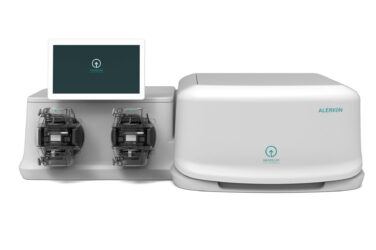PM360 asked experts in helping patients stay on their prescribed therapies about where the industry could make the biggest improvements and how to better detect potential barriers. Specifically, we asked them:
- What is the biggest area where the industry could stand to improve its approach to boosting adherence? Why is the industry currently doing poorly in this area? How can they improve?
- How can the industry better monitor and detect potential barriers to adherence for individual patients? What else can the industry do to better personalize adherence approaches to ensure they are providing solutions the patient needs?
 Medication adherence has typically focused on providing reminder tactics to counteract forgetfulness. This relatively simplistic approach only addresses one aspect of nonadherence. Too often failure to take medication as prescribed reflects the lack of impactful communication between patients and their HCPs. Direct-to-patient materials traditionally proffer discussion guides consisting of a series of questions for patients to ask their providers. These are not really discussion guides but usually a formulaic list of closed-ended questions placing the burden on the patient in a time-pressured office environment. Shared decision-making is well-recognized as a positive driver of adherence. It is time for brands to re-frame materials to target HCPs. Providing clinician-led guides for communication must go beyond how and when to take medication. Engaging in shared decision-making at point of care requires a dynamic dialogue in which patients can learn not only why their medications are being prescribed but feel encouraged to ask questions and express concerns about how they are expected to incorporate these regimens in their daily lives. These discussions can be initiated by HCPs ranging from physicians to advanced practice professionals. Facilitating this level of communication can foster concordance and ultimately drive desirable clinical outcomes.
Medication adherence has typically focused on providing reminder tactics to counteract forgetfulness. This relatively simplistic approach only addresses one aspect of nonadherence. Too often failure to take medication as prescribed reflects the lack of impactful communication between patients and their HCPs. Direct-to-patient materials traditionally proffer discussion guides consisting of a series of questions for patients to ask their providers. These are not really discussion guides but usually a formulaic list of closed-ended questions placing the burden on the patient in a time-pressured office environment. Shared decision-making is well-recognized as a positive driver of adherence. It is time for brands to re-frame materials to target HCPs. Providing clinician-led guides for communication must go beyond how and when to take medication. Engaging in shared decision-making at point of care requires a dynamic dialogue in which patients can learn not only why their medications are being prescribed but feel encouraged to ask questions and express concerns about how they are expected to incorporate these regimens in their daily lives. These discussions can be initiated by HCPs ranging from physicians to advanced practice professionals. Facilitating this level of communication can foster concordance and ultimately drive desirable clinical outcomes.  From our experience in patient research across many different treatments, we’ve defined several key insights on what may lead to nonadherence:
From our experience in patient research across many different treatments, we’ve defined several key insights on what may lead to nonadherence:
- Complex medication routines and patients feeling overwhelmed with their regimen.
- Inconvenient or challenging-to-adhere-to medications that have complex administration methods.
- Lack of education on the importance of taking their medications as prescribed.
- The way medications are packaged can impact adherence. (For example, are the product’s administration instructions printed on the packaging or inserted in the packaging on a separate sheet?)
- A lack of follow-up and support of the patient by the prescriber’s office.
The industry has a responsibility to work alongside the many stakeholders involved in patient care to own the task of reaching patients in a meaningful way. By fostering cross-stakeholder coordination and support across pharma brands, HCPs, pharmacies, and insurance companies, we can pave the way for better solutions that enhance adherence and, ultimately, improve patient outcomes. Through united efforts, we can mitigate this significant challenge and improve patient care.
 Perhaps the industry should start by looking inward at how we measure success. The entire machine is wired around getting new scripts. NRx data drives stock prices, determines ROI, and directs bonuses. What if instead of short-term gains, we prioritized the long game? What if the industry were to incentivize persistence over new prescriptions? Imagine if we collectively proclaimed that the real value is not only in starting, but in staying. Imagine how our lens might shift if patient navigators could pilot past the port of medication possession. Let’s turn our vast resources toward education, health literacy, and community health liaisons. Additionally, improving adherence requires diving into the disparities in care that have long been overlooked. We need to interrogate the vestiges of mistrust due to medication experimentation on marginalized communities and dismantle the race-based myths and “corrections” built into the very instruments that measure vital signs and gage our health. Now that greater representation has been mandated in clinical trials, the industry is being called upon to employ new modalities to reach people who have been previously excluded. This will invariably lead to new perspectives on medication taking, and we would do well to listen closely to these valuable voices.
Perhaps the industry should start by looking inward at how we measure success. The entire machine is wired around getting new scripts. NRx data drives stock prices, determines ROI, and directs bonuses. What if instead of short-term gains, we prioritized the long game? What if the industry were to incentivize persistence over new prescriptions? Imagine if we collectively proclaimed that the real value is not only in starting, but in staying. Imagine how our lens might shift if patient navigators could pilot past the port of medication possession. Let’s turn our vast resources toward education, health literacy, and community health liaisons. Additionally, improving adherence requires diving into the disparities in care that have long been overlooked. We need to interrogate the vestiges of mistrust due to medication experimentation on marginalized communities and dismantle the race-based myths and “corrections” built into the very instruments that measure vital signs and gage our health. Now that greater representation has been mandated in clinical trials, the industry is being called upon to employ new modalities to reach people who have been previously excluded. This will invariably lead to new perspectives on medication taking, and we would do well to listen closely to these valuable voices.  The tipping point—and transformational moment—for the industry will come from leveraging patient data for personalization. When patients don’t adhere to medication advice from their providers, reasons run the gamut from fear to cost to misunderstanding. Patients may not feel sick or may think medication can’t help them. For each patient, the reason is different. Accordingly, the industry must look at each patient on an individual level to understand how best to support that patient’s medication adherence. It’s not enough to know the gender, race, and common history of a population or segment to determine whether each of them will adhere, yet the industry focuses on this kind of data to make decisions about prescribing and following up on patient adherence. Improvement will require focused investment and process change. Right now, it is possible to gather enough data about each patient to use AI to personalize support to a factor of one. However, this is not generally done in the industry. Until it is, adherence efforts will only be marginally effective. When the industry figures out how to know more about patients, it will have a handle on increasing adherence person by person.
The tipping point—and transformational moment—for the industry will come from leveraging patient data for personalization. When patients don’t adhere to medication advice from their providers, reasons run the gamut from fear to cost to misunderstanding. Patients may not feel sick or may think medication can’t help them. For each patient, the reason is different. Accordingly, the industry must look at each patient on an individual level to understand how best to support that patient’s medication adherence. It’s not enough to know the gender, race, and common history of a population or segment to determine whether each of them will adhere, yet the industry focuses on this kind of data to make decisions about prescribing and following up on patient adherence. Improvement will require focused investment and process change. Right now, it is possible to gather enough data about each patient to use AI to personalize support to a factor of one. However, this is not generally done in the industry. Until it is, adherence efforts will only be marginally effective. When the industry figures out how to know more about patients, it will have a handle on increasing adherence person by person.  Recognizing a patient’s time on therapy isn’t static, solution providers are identifying ways to access real-world data sources to adapt patient support in real time based on information that is observed. One example of this is integrating with a patient’s wearable. By gaining access to passive patient-generated health data (PGHD), brands can better monitor changes to a patient’s day-to-day routine, including physical activity levels, which can be correlated to adherence risk and inform appropriate interventions. Another example is by leveraging a progressive dialogue with a patient’s HCP, such as a clinical nurse educator in the support program. As notes and call recordings are captured, natural language processing AI technology can be used to mine data and get a level of context that often gets missed. For instance, monitoring a patient’s sentiment over time can show when a patient’s barriers to adherence are the highest. Lastly, it is important to obtain direct feedback from patients. For example, patient support programs that leverage digital support via an app allow patients to track their progress on therapy and report how they’re feeling. This input can provide real-time insight into what is happening to get ahead of changes in adherence risk for the patient.
Recognizing a patient’s time on therapy isn’t static, solution providers are identifying ways to access real-world data sources to adapt patient support in real time based on information that is observed. One example of this is integrating with a patient’s wearable. By gaining access to passive patient-generated health data (PGHD), brands can better monitor changes to a patient’s day-to-day routine, including physical activity levels, which can be correlated to adherence risk and inform appropriate interventions. Another example is by leveraging a progressive dialogue with a patient’s HCP, such as a clinical nurse educator in the support program. As notes and call recordings are captured, natural language processing AI technology can be used to mine data and get a level of context that often gets missed. For instance, monitoring a patient’s sentiment over time can show when a patient’s barriers to adherence are the highest. Lastly, it is important to obtain direct feedback from patients. For example, patient support programs that leverage digital support via an app allow patients to track their progress on therapy and report how they’re feeling. This input can provide real-time insight into what is happening to get ahead of changes in adherence risk for the patient.  To overcome barriers and improve medication adherence, HCPs must engage patients within the context of their lived environments. How can this be achieved with primary care and health systems stretched thin? Third-party virtual care teams can help close the gap in chronic disease management by using video to increase the number of touchpoints with patients in between traditional office visits. The lack of ongoing engagement after an office visit can leave patients unsupported and disconnected in their healthcare journey, often impacting adherence rates. The argument against increasing touchpoints has largely been that it is not scalable or personal, but that’s where the beauty of asynchronous video comes in. Through the exchange of video, virtual care teams can provide personalized medication support to more patients in an efficient manner and alleviate additional demand on HCPs. In fact, the CDC recently recommended asynchronous video appointments as the standard of care for Directly Observed Therapy in the public health setting. By conducting daily video check-ins, virtual care teams can support the patient’s medication storage, administration practices, and detect any social determinants of health (SDOH) that may impact adherence such as transportation issues, financial constraints, or limited access to healthy food options.
To overcome barriers and improve medication adherence, HCPs must engage patients within the context of their lived environments. How can this be achieved with primary care and health systems stretched thin? Third-party virtual care teams can help close the gap in chronic disease management by using video to increase the number of touchpoints with patients in between traditional office visits. The lack of ongoing engagement after an office visit can leave patients unsupported and disconnected in their healthcare journey, often impacting adherence rates. The argument against increasing touchpoints has largely been that it is not scalable or personal, but that’s where the beauty of asynchronous video comes in. Through the exchange of video, virtual care teams can provide personalized medication support to more patients in an efficient manner and alleviate additional demand on HCPs. In fact, the CDC recently recommended asynchronous video appointments as the standard of care for Directly Observed Therapy in the public health setting. By conducting daily video check-ins, virtual care teams can support the patient’s medication storage, administration practices, and detect any social determinants of health (SDOH) that may impact adherence such as transportation issues, financial constraints, or limited access to healthy food options.








